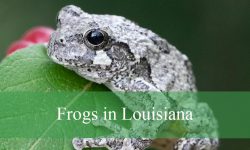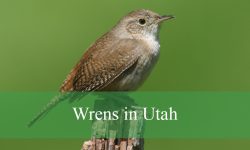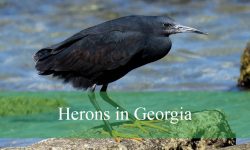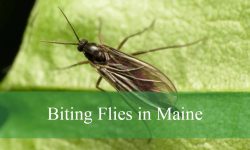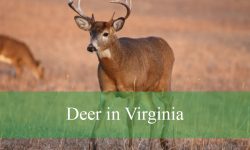Georgia is home to a thriving population of wild turkeys, most notably the Eastern Wild Turkey, which is the dominant subspecies across the state. These birds are not only a symbol of North America’s rich wildlife but also an essential part of Georgia’s natural heritage and hunting culture. With their iridescent feathers, thunderous gobbles, and intriguing social behaviors, wild turkeys are among the most captivating birds found in Georgia’s forests and fields.
Turkeys are typically active at dawn and dusk, roosting high in trees at night and foraging for food during the day. Springtime in Georgia marks the beginning of the breeding season, when males display flamboyant courtship behaviors. Their presence is not limited to remote woods; they are increasingly found near farmlands, suburban edges, and protected public lands.
In this detailed guide, you’ll learn to identify wild turkeys in Georgia, explore their habits and behaviors, and uncover fun facts and regional subspecies variations.
Types of Wild Turkeys in Georgia
Eastern Wild Turkey (Meleagris gallopavo silvestris)
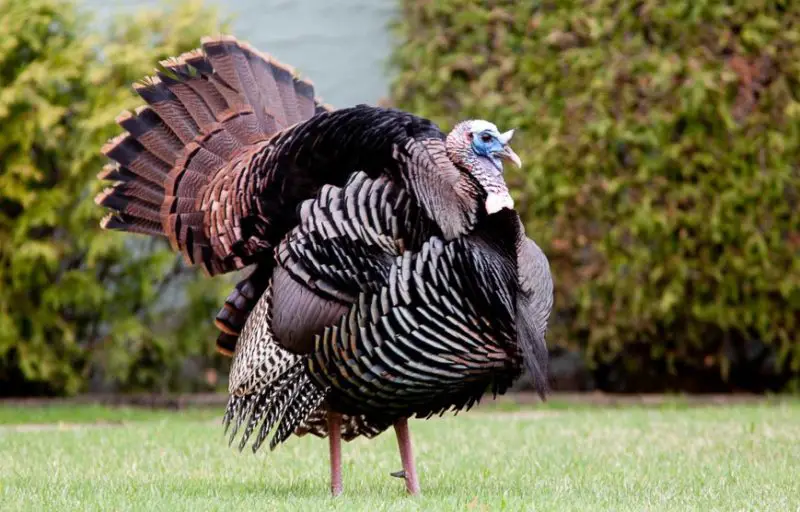
The Eastern Wild Turkey is the most common and widespread wild turkey in Georgia. These large birds can weigh between 16 to 25 pounds, with males (toms) significantly larger than females (hens). Their feathers are richly colored with a mix of copper, bronze, and green iridescence. The tail feathers are edged with chestnut brown, and their wings are barred with black and white. Males sport a beard, spurs on their legs, and a brightly colored head with a snood and wattle that become more vivid during mating season.
They inhabit a wide range of environments, from mixed hardwood forests to pine stands and agricultural fields. The Piedmont, Coastal Plain, and mountainous regions all support healthy populations. They forage for acorns, seeds, insects, and berries, and they can often be seen scratching in leaf litter or moving in small flocks.
Breeding season starts in early spring. Males perform courtship displays, fanning out their tails, puffing up their feathers, and gobbling to attract females. After mating, hens lay eggs in ground nests camouflaged among vegetation.
These turkeys play a key role in Georgia’s hunting culture and conservation efforts. Their numbers were once decimated but have rebounded thanks to wildlife management and reintroduction programs.
Osceola Wild Turkey (Florida Wild Turkey)
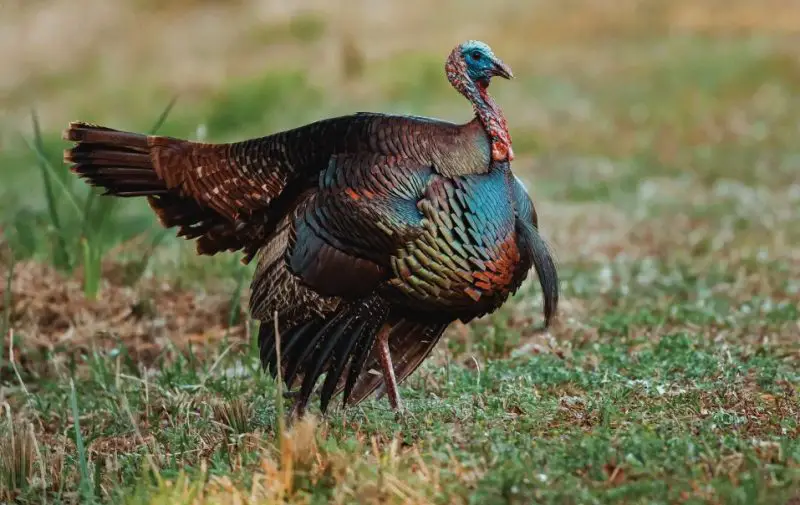
Though primarily found in Florida, the Osceola Wild Turkey (Meleagris gallopavo osceola) has been known to wander into the extreme southern regions of Georgia. These turkeys are smaller and darker than their Eastern relatives, with less bronze and more iridescent greenish-black plumage. They also feature narrower white barring on their secondary wing feathers.
Osceola turkeys are adapted to dense, subtropical habitats, including palmetto thickets and pine flatwoods. Their gobbles are more nasal and less resonant compared to Eastern Wild Turkeys, and they are generally more elusive and less vocal overall.
Sightings of true Osceola turkeys in Georgia are rare, typically limited to counties near the Florida border. However, their occasional presence adds diversity to the turkey population and presents a unique opportunity for local birdwatchers and hunters.
Although not officially managed in Georgia, the Osceola’s rare appearances are sometimes documented during turkey surveys or anecdotal observations.
Hybrid Turkeys (Eastern/Osceola Mixes)
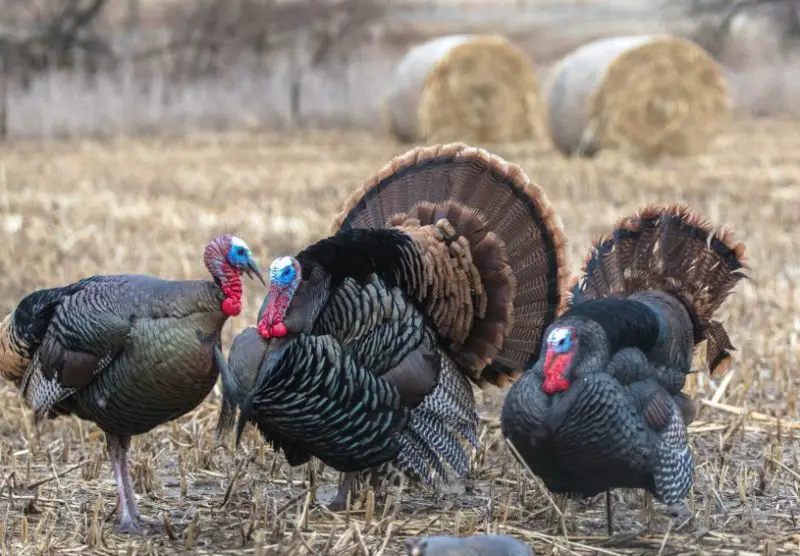
In southern Georgia, especially near the Florida line, hybrid wild turkeys resulting from interbreeding between Eastern and Osceola subspecies may be encountered. These birds show a mix of traits—such as the large size and bronze coloring of Eastern turkeys combined with the wing feather pattern and darker plumage of Osceolas.
Hybrids are challenging to identify in the field without genetic testing, but experienced hunters and biologists may recognize them based on subtle differences. Their behavior may also differ slightly, especially during the breeding season, where hybrid males may display unique gobbling and strutting patterns.
The existence of hybrids underscores Georgia’s role as a transition zone between subspecies. While hybrids are not considered a separate type, their presence contributes to the biological diversity of the state’s turkey population.
Though not common, they are occasionally documented in wildlife research or through hunter harvest reports.
Behavior and Mating Rituals
Wild turkeys in Georgia exhibit complex behaviors, particularly during spring when breeding season begins. Males become territorial and form a social hierarchy through displays and brief physical confrontations. The dominant males gobble loudly, strut, and fan their tails to assert dominance and attract mates.
Courtship begins with a dramatic strut: toms puff up their feathers, drag their wings, and spread their tails. This is often accompanied by drumming sounds and sharp gobbles that can be heard over great distances. These behaviors serve both to impress hens and to warn rival males.
Hens lay about 10 to 14 eggs in shallow ground nests. Incubation lasts around 28 days, and the poults are precocial, meaning they leave the nest within a day and begin feeding themselves under the watchful eye of the hen.
Outside the mating season, wild turkeys tend to form gender-specific flocks—hens with young and toms in bachelor groups.
Habitat and Distribution in Georgia
Wild turkeys are found throughout Georgia, from the Appalachian Mountains in the north to the flat pine forests and swamps of the south. They thrive in mixed habitats that offer cover, food sources, and open spaces for foraging.
In north Georgia, mountainous regions provide mature hardwoods and ridge lines for roosting. In central Georgia, rolling hills and farmlands offer abundant acorns and fields for feeding. In the south, pine plantations and bottomland hardwoods support high turkey densities.
Turkeys roost in trees at night, preferring tall, mature hardwoods or pines near water sources. During the day, they forage on the ground, often seen in pastures, forest edges, or power line clearings.
Georgia’s Wildlife Resources Division actively manages public lands like Wildlife Management Areas (WMAs) to maintain healthy turkey populations.
Fun Facts About Wild Turkeys in Georgia
Wild turkeys can fly up to 55 mph in short bursts and run at speeds of 20 mph, making them surprisingly agile for their size. Their eyesight is excellent, with a field of vision close to 270 degrees and the ability to detect motion from over 100 yards away.
Male turkeys have a unique beard that continues to grow throughout their life. Some hens also grow beards, though this occurs in only about 10% of the population.
Gobbling can be heard over a mile away in quiet conditions. Each male has a distinctive gobble, and they often gobble in response to loud noises such as thunder or barking dogs.
In Georgia, wild turkeys are a major focus of conservation success stories. The state’s restoration programs have brought turkey numbers back from near extinction in the mid-1900s to thriving levels today.
FAQs About Wild Turkeys in Georgia
What is the most common type of wild turkey in Georgia?
The Eastern Wild Turkey is by far the most common and widespread type found throughout the state.
Are there any other types of wild turkeys in Georgia?
Occasionally, Osceola Wild Turkeys and Eastern/Osceola hybrids may be found in southern Georgia, especially near the Florida border.
When is the best time to see or hunt wild turkeys in Georgia?
Spring, especially March through May, is the best time for both observing and hunting turkeys due to breeding season activity.
What do wild turkeys eat in Georgia?
Their diet includes acorns, seeds, grasses, berries, insects, and small reptiles. They forage mainly on the ground.
Where do wild turkeys sleep?
They roost in tall trees at night, often near water bodies and away from predators.
Can wild turkeys be aggressive?
During the breeding season, male turkeys may become aggressive toward other males and occasionally toward humans if they feel threatened.
Are wild turkeys protected in Georgia?
Yes, turkey hunting is regulated with specific seasons, bag limits, and hunting zones to ensure sustainable populations.
Do wild turkeys migrate in Georgia?
No, wild turkeys do not migrate. They remain in the same general area year-round, although they may change habitat use seasonally.

